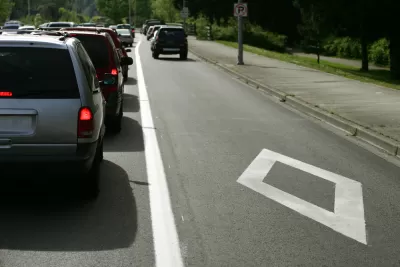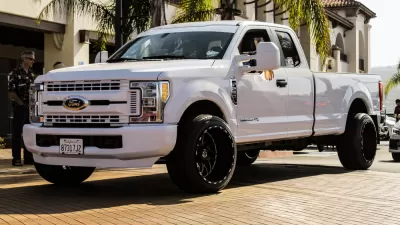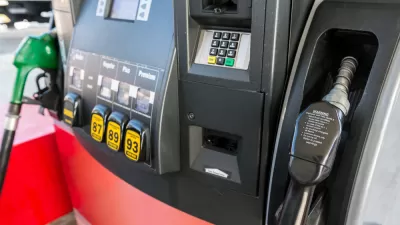Both are problems, but globally, sports utility vehicles sales are proliferating far faster than cars, be they electric or petrol-powered, posing a major challenge for governments committed to reducing greenhouse gas emissions.

"The global S.U.V. boom is a roadblock in the march toward cleaner cars...," reports Hiroko Tabuchi for The New York Times on March 3. According to John German of the International Council on Clean Transportation, "[t]he fuel economy/GHG targets for light trucks [in the U.S.] are more than 25% lower than the targets for cars with the same footprint (wheelbase times track width)..."
Spurred by rising incomes and lower gas prices, drivers in China, Australia and other countries are ditching their smaller sedans for bigger rides at a rapid pace. For the first time, S.U.V.s and their lighter, more carlike cousins known as “crossovers” made up more than one in three cars sold globally last year, almost tripling their share from just a decade ago, according to new figures from the auto research firm JATO Dynamics.
McKinsey, the global consulting firm, predicts that by 2022, one in every two cars sold in China will be an S.U.V.
In the U.S, where car companies created the SUV in the 1970s, light trucks, a category which includes pickups, SUVs, and vans, outsell cars. In 2016, they composed 61 percent of auto sales. Last year, the figure jumped to 67 percent, according to Todd Lassa of Automobile (magazine).
The result is that fuel economy gains slowed to 1.1 percent in 2015, according to the latest data available from the United Nations’ Global Fuel Economy Initiative, "far below the near 3-percent clip needed to simply stabilize emissions from the world’s car fleet," notes Tabuchi. And don't expect battery technology to help in the SUV arena, as lackluster sales of the Tesla Model X would seem to illustrate.
S.U.V.s are also less likely to go electric soon. There are technological hurdles to powering a larger car with batteries, and the perception among many automakers remains that drivers of S.U.V.s value power and performance, and don’t want to be constrained by the range anxiety of battery-powered cars.
While global automakers now investing at least $90 billion in electric vehicle technology, "with ambitious plans to roll out [127] new battery-powered models in the next five years," according to Keith Naughton of Bloomberg News. But the real profits are with light trucks.
"A $60,000 truck, for example, can generate tens of thousands of dollars in operating profit," writes Tabuchi. On the other hands, many manufacturers can expect "to lose between $7,000 to more than $10,000 per electric vehicle sold in the United States," according to Moody's. However, some analysts expect EVs sales to dramatically increase by 2030 if not earlier.
If the outlook for passenger vehicle sales looks bad from a climate perspective, it may go from bad to worse.
One question that worries experts: Will the world embrace the S.U.V.’s even-more-polluting cousin, the all-American pickup truck?
Hat tip to Kenyon Karl
FULL STORY: The World Is Embracing S.U.V.s. That’s Bad News for the Climate

Maui's Vacation Rental Debate Turns Ugly
Verbal attacks, misinformation campaigns and fistfights plague a high-stakes debate to convert thousands of vacation rentals into long-term housing.

Planetizen Federal Action Tracker
A weekly monitor of how Trump’s orders and actions are impacting planners and planning in America.

In Urban Planning, AI Prompting Could be the New Design Thinking
Creativity has long been key to great urban design. What if we see AI as our new creative partner?

King County Supportive Housing Program Offers Hope for Unhoused Residents
The county is taking a ‘Housing First’ approach that prioritizes getting people into housing, then offering wraparound supportive services.

Researchers Use AI to Get Clearer Picture of US Housing
Analysts are using artificial intelligence to supercharge their research by allowing them to comb through data faster. Though these AI tools can be error prone, they save time and housing researchers are optimistic about the future.

Making Shared Micromobility More Inclusive
Cities and shared mobility system operators can do more to include people with disabilities in planning and operations, per a new report.
Urban Design for Planners 1: Software Tools
This six-course series explores essential urban design concepts using open source software and equips planners with the tools they need to participate fully in the urban design process.
Planning for Universal Design
Learn the tools for implementing Universal Design in planning regulations.
planning NEXT
Appalachian Highlands Housing Partners
Mpact (founded as Rail~Volution)
City of Camden Redevelopment Agency
City of Astoria
City of Portland
City of Laramie





























